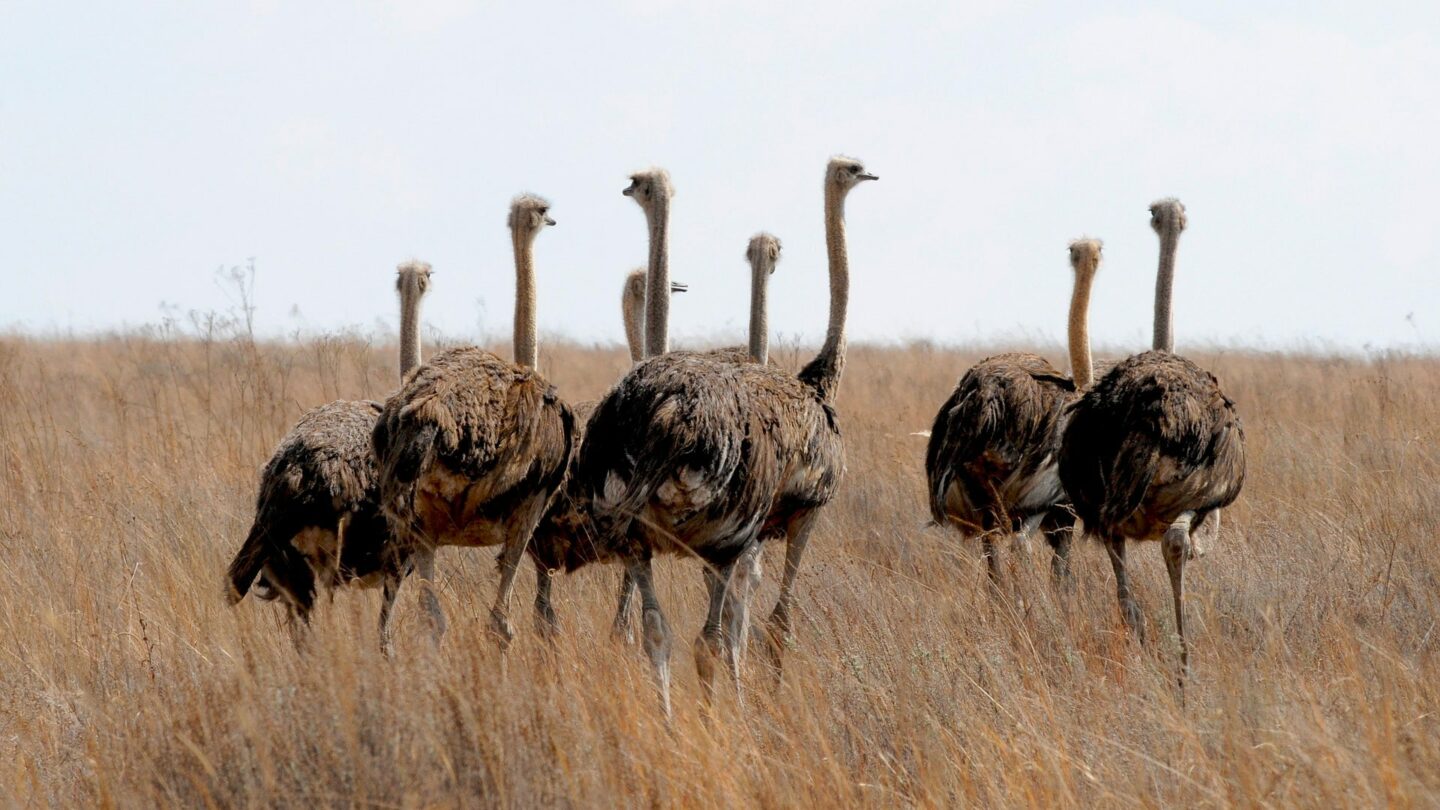
If you’re passing through Oudtshoorn, a town that’s hard to pronounce, make sure you take the time to stop by, as we were pleasantly surprised by all the things you can do.
Oudtshoorn is a town in South Africa, 350 km east of Cape Town. It’s the ostrich capital of the world and home to the country’s main Afrikaans culture festival. It’s a pleasant town just 1 hour from Knysna, where activities are perfectly suited to families. We’ve tested a few of them, and we’d like to share our feedback with you.
Tourism, animal husbandry and the ostrich industry are Oudtshoorn’s main economic activities, with one of the most important ostrich breeding and concentration centers in the world. There are around 200,000 birds on 500 farms. At the beginning of the xx e In the 19th century, it supplied 85% of its feathers to the couture and entertainment industries, such as France’s Moulin Rouge.
Take a look at our other articles on South Africa to help you prepare for your trip:
- What to visit in Cape Town
- What to see in Knysna
- Cooking classes and recipes at Bo Kaap
- Cape Peninsula must-sees
- Dive into the great white shark cage at Gansbaai
- Follow the wine route from Franschoekk to Stellenbosch
- A practical guide to planning your tripWhat to do in Oudtshoorn
SOMMAIRE DE L'ARTICLE :
| LA FERME AUX AUTRUCHES
Several farms offer this activity on a daily basis from 8am to 4pm. You’ll be able to get up close and personal with these big birds. We tested the Safari Ostrich Farm on the road to Mosselbay.
It’s a touristy place, but it’s sure to keep the whole family entertained. But it’s still a must-see in the region!
Upon request and reservation, the tour guide can speak French. It is possible to have lunch on site and taste the ostrich fillet.
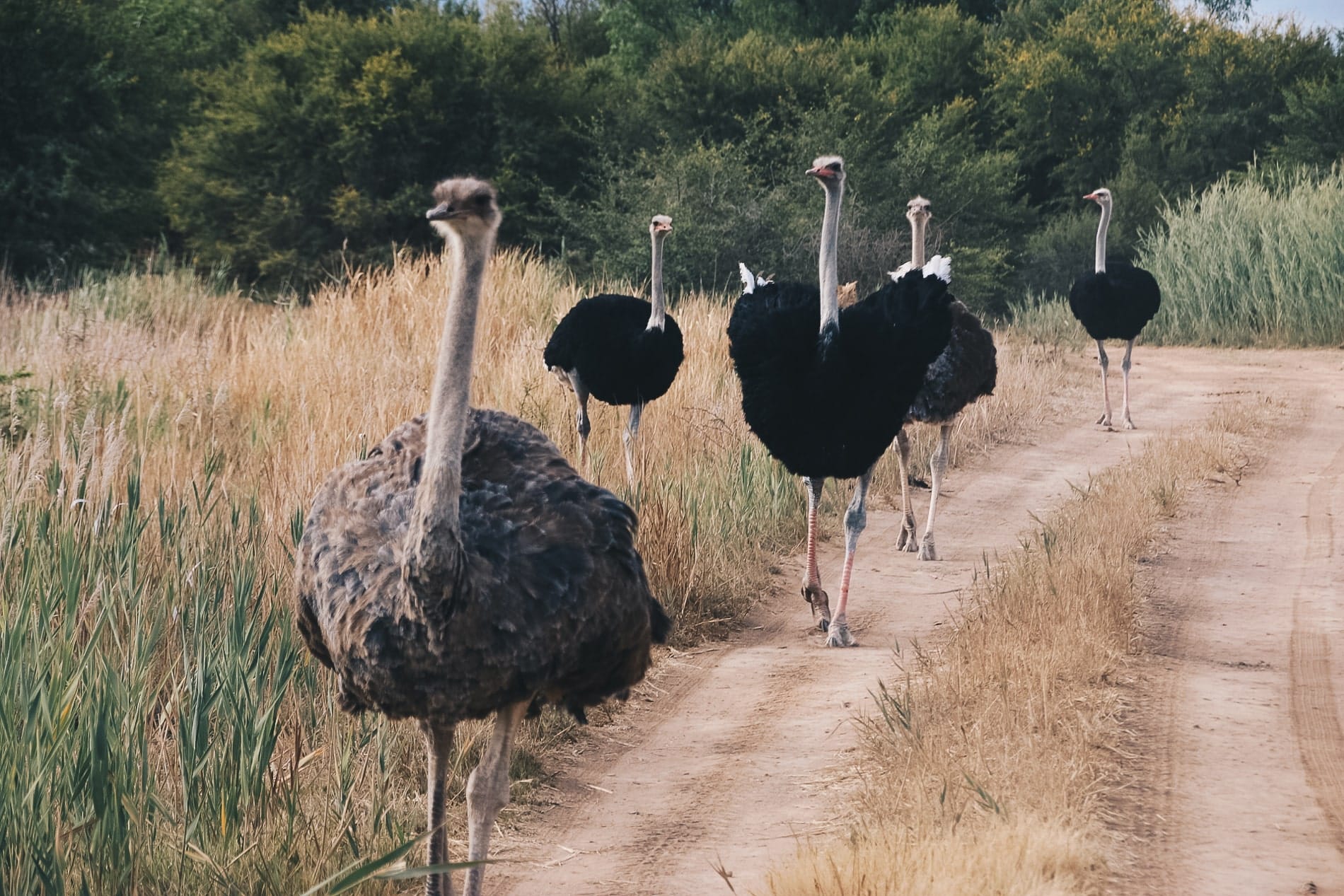
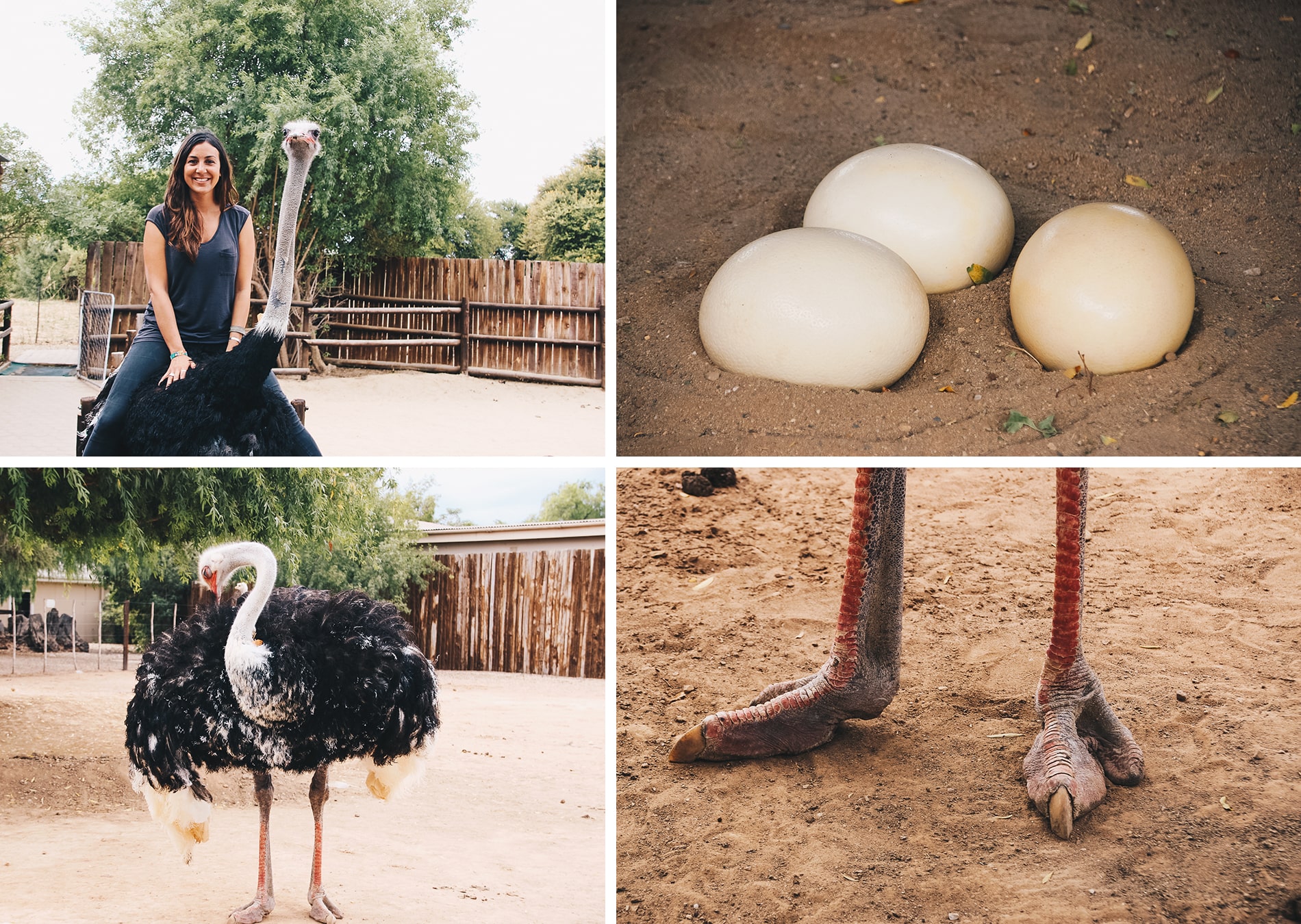
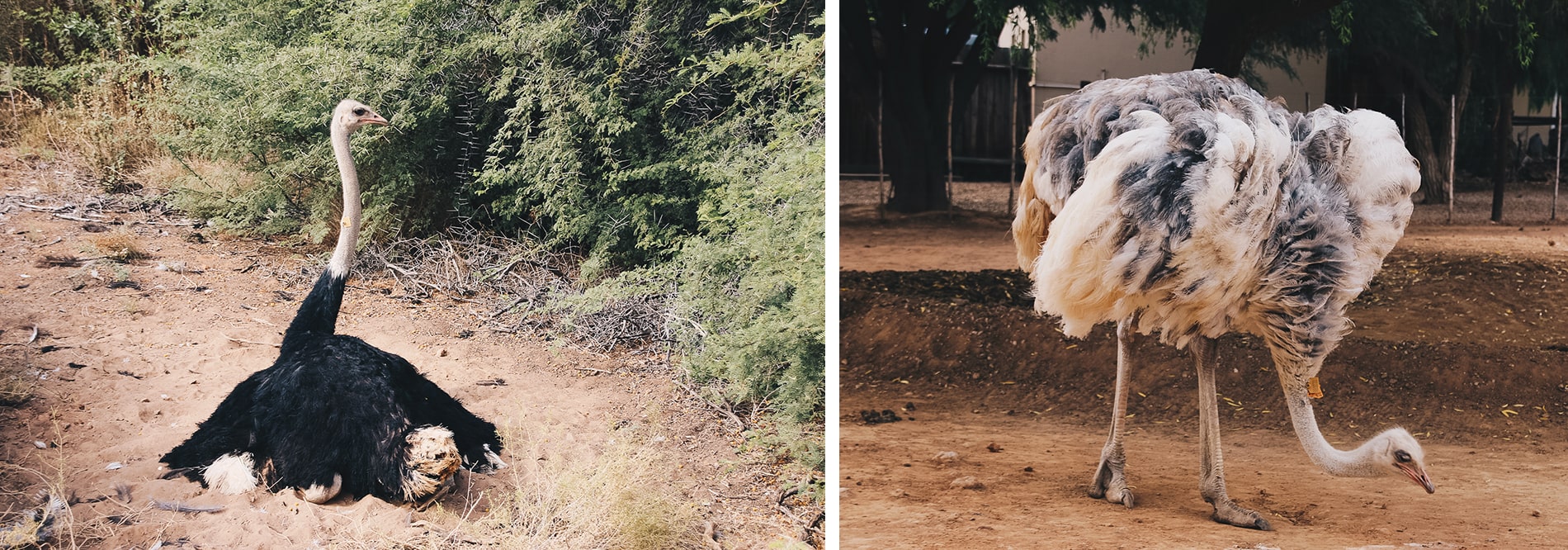
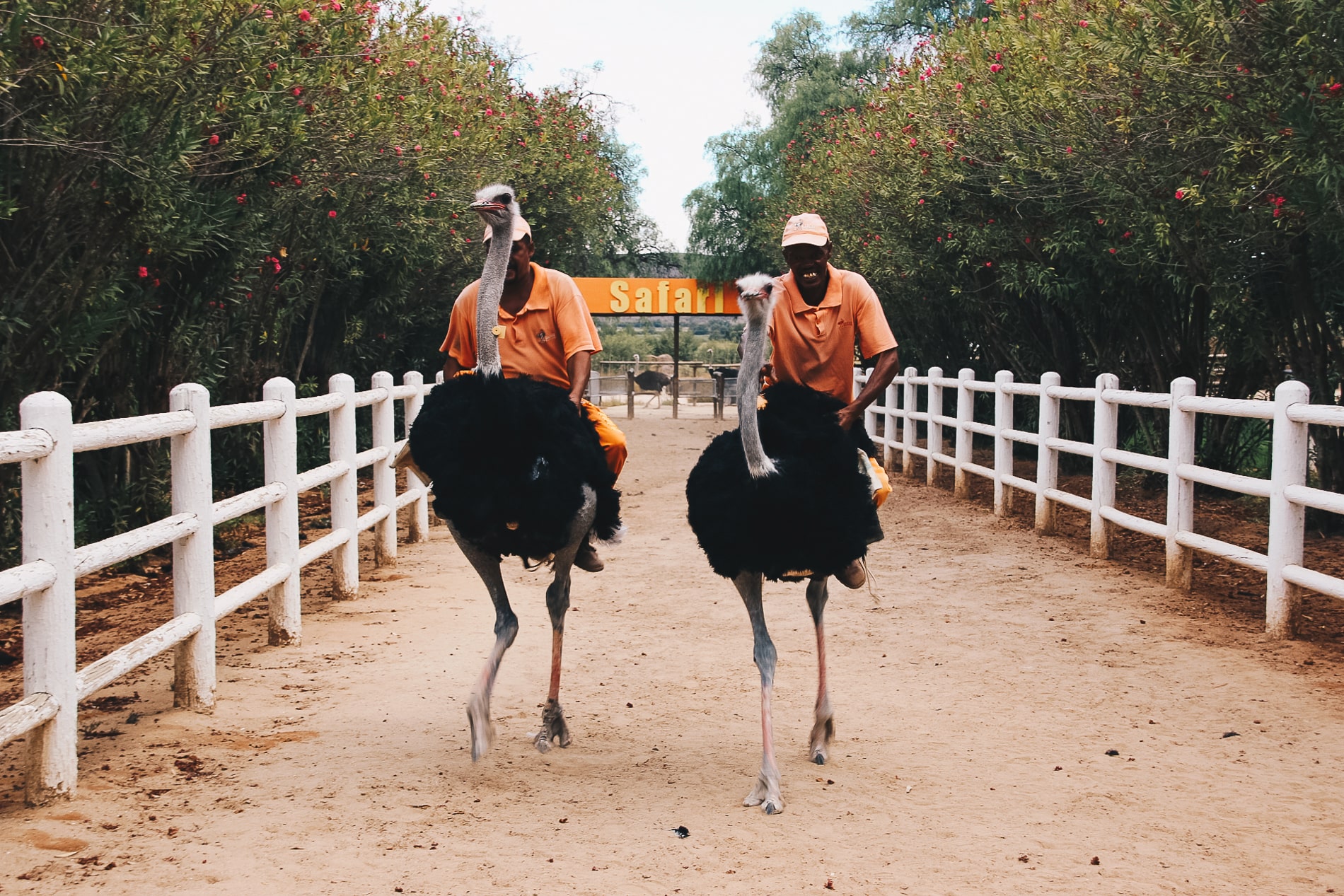
| THE CANGO CAVES
The Cango Caves are a place to discover! The Cango caves are 29km fromOutshoorn and are well worth the detour! We didn’t know what to expect when we arrived, but we were impressed by the place and its gigantic caves, over 20 million years old. They were formed before the continents separated, when this part of the world still had a subtropical climate.
They were first discovered 80,000 years ago by the San, a nomadic people originally called Bushman today, who occupied the entrance for shelter. The first piece was rediscovered by Jacobus vanzyl arrived in 1780. The second piece was discovered in 1792 by a farmer, Monsieur Botha, searching for his herd while carrying only an oil lamp! The room now bears his name.
The Grotto is 5 km 400 long and descends to a depth of 12 metres. There are more than 150 metres of limestone above the ceiling, and temperatures fluctuate between 18 and 20 degrees. The cave is formed of limestone rocks carved out by water. The colors of stalagmites, stalactites and frozen waterfalls vary according to the amount of iron oxide, which gives them an ochre color, and manganese oxide, which gives them a gray color. Sumptuous and majestic, not to be missed! Allow around R80/p for the standard tour and R100 for the adventure tour.
Two types of tour are available:
- The classic circuit, the shortest, 400 meters long, which doesn’t require good physical condition and takes 45 minutes to 1 hour.
- The adventure tour, a more physical, wetter tour that takes you on a caving expedition of 1 km 200 one way and the same for the return, with 4 narrower galleries where you have to crawl, climb, slide along the formations and climb the 1117 steps!
Did you know? Cango Caves, also pronounced, kanup, “means place of waters between mountains.”
Key dates:
- In 1891, the cave was opened to the public, with visitors carrying flaming torches and candles. Remnants of the blackness are still visible.
- 1960 cave fitted out with ramps.
- Between 1960 and 1995, 1,000 people came inside the caves to listen to shows.
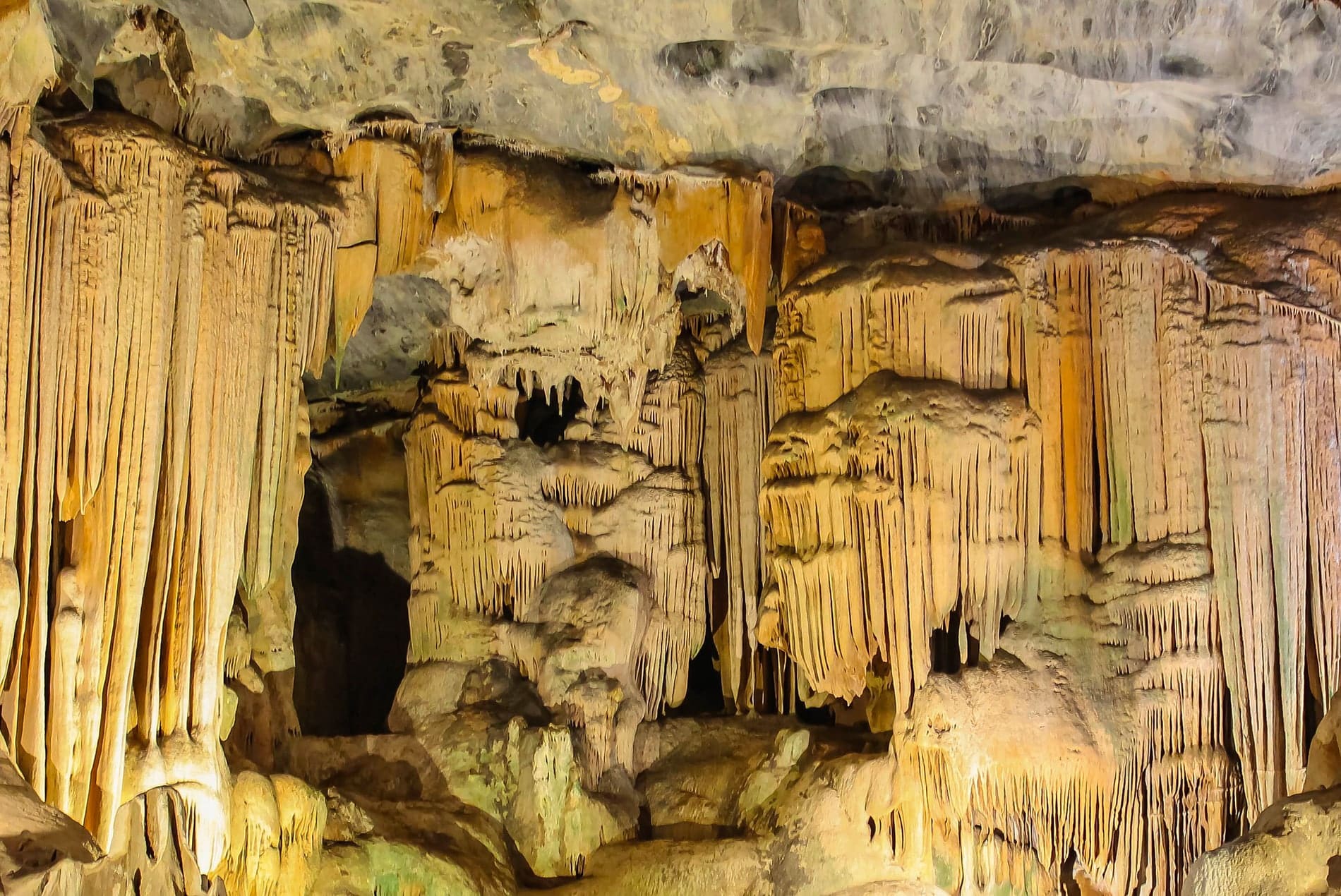
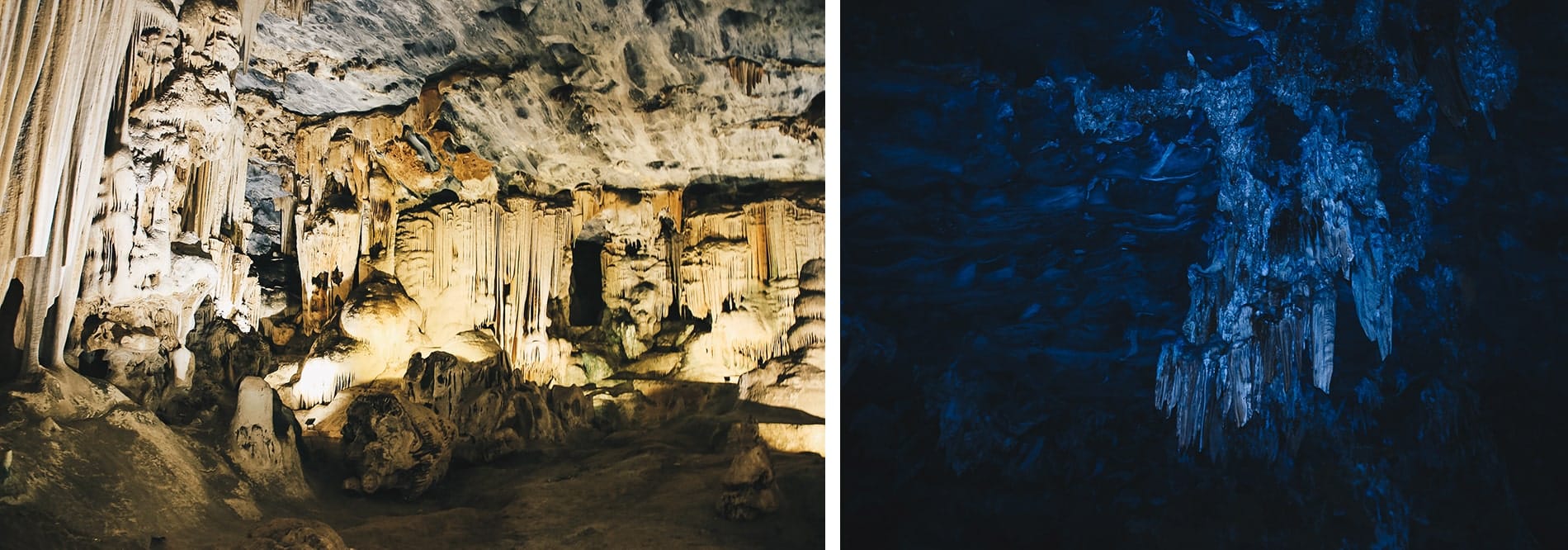
| CANGO WILDLIFE RANCH
The Cango Wildlife is apparently not a zoo, even if it looks like one. You and your family can come here to discover many African animal species, as well as some more original or endangered species from other continents.
The aim of this park is to raise local awareness and visitors on animal preservation, giving you a conservation speech to make you feel less guilty, but with hindsight today, I don’t really know what to think and I still have serious doubts about them. Here you’ll find lemurs from Madagascar, a Bengal tiger, white lions from South Africa, leopards, cheetahs, giant vultures, a pygmy hippopotamus and various species of snakes from Asia, Amazonia and Africa, such as the Black Mamba (the deadly black snake from the film Kill Bill).
All the animals here can no longer be rehabilitated in their natural environment, so this park is a kind of retirement center, or so they tell us in their presentation. These animals were taken in and placed here because they were orphaned or injured and could no longer survive alone in this wild environment. Instead of leaving them to be devoured by predators, they took the initiative of creating this center to learn a little more about each species and let them live out their days in peace.
We knew that there was a pool where we could watch crocodiles in a cage, snorkeling! After making the great white shark cage, we were itching to do the crocodile one! It’s well worth the effort, as they are not fed, and seeing these animals so close underwater is absolutely unique and different from seeing them from the deck! I found it an interesting way to learn more about this fascinating animal, which is rather peaceful when it approaches you. Expect to pay around R340/p.
You can also enter the cheetah enclosure to take a photo. This is not a must, as you can see them on safari or in a conservation center like the one in Namibia.
The entrance fee (R160/p) includes a free guided tour of the park – ask Ed for the French tour!
At the time, I found the reserve initiative interesting, but now I have my doubts, because it looks a bit like a zoo, but it’s always better to use the words “reserve” and “raise awareness” in front of visitors! The fact that there are animals other than those encountered in Africa puzzles me. As I always say, you can’t see evil everywhere, so make up your own mind!
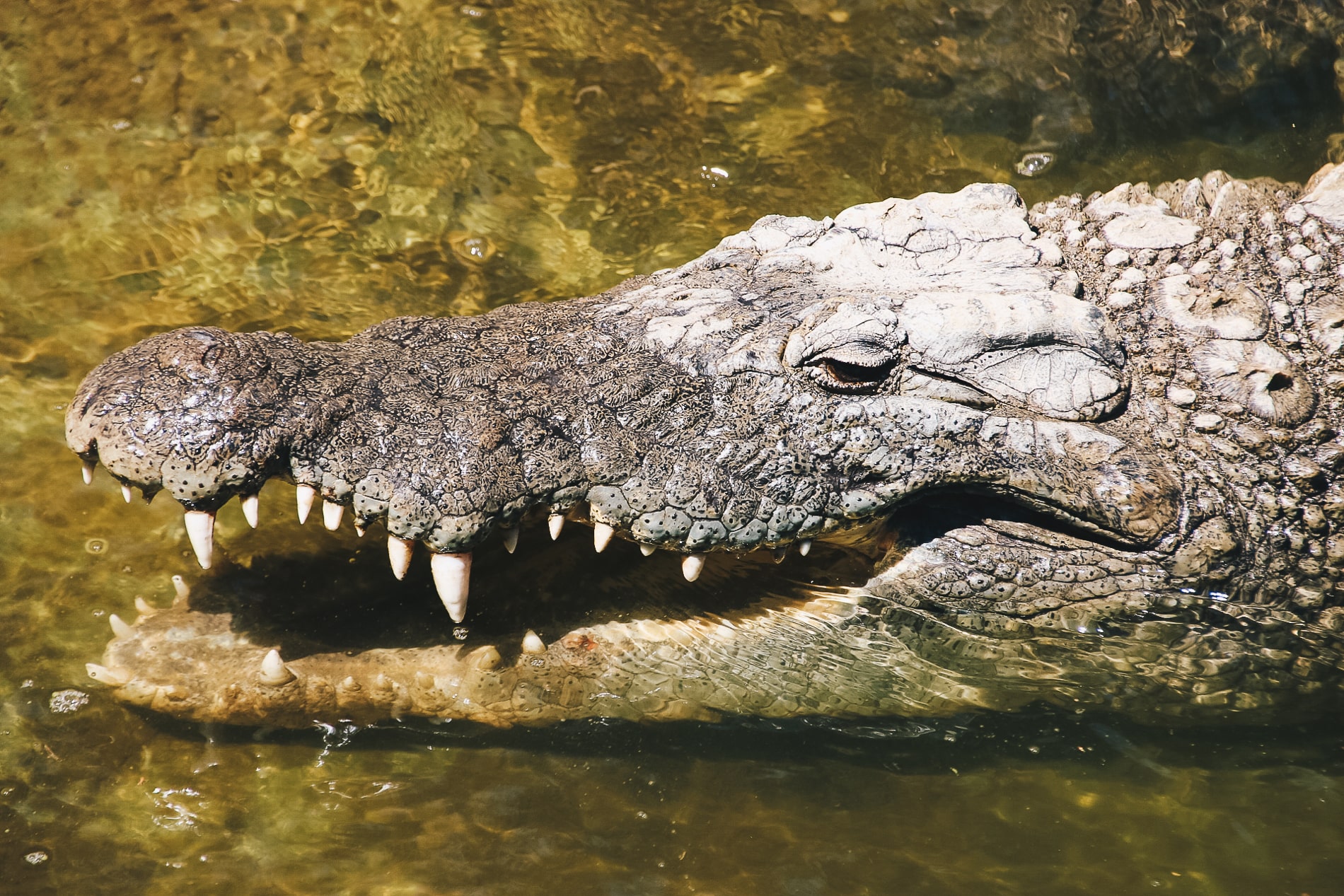
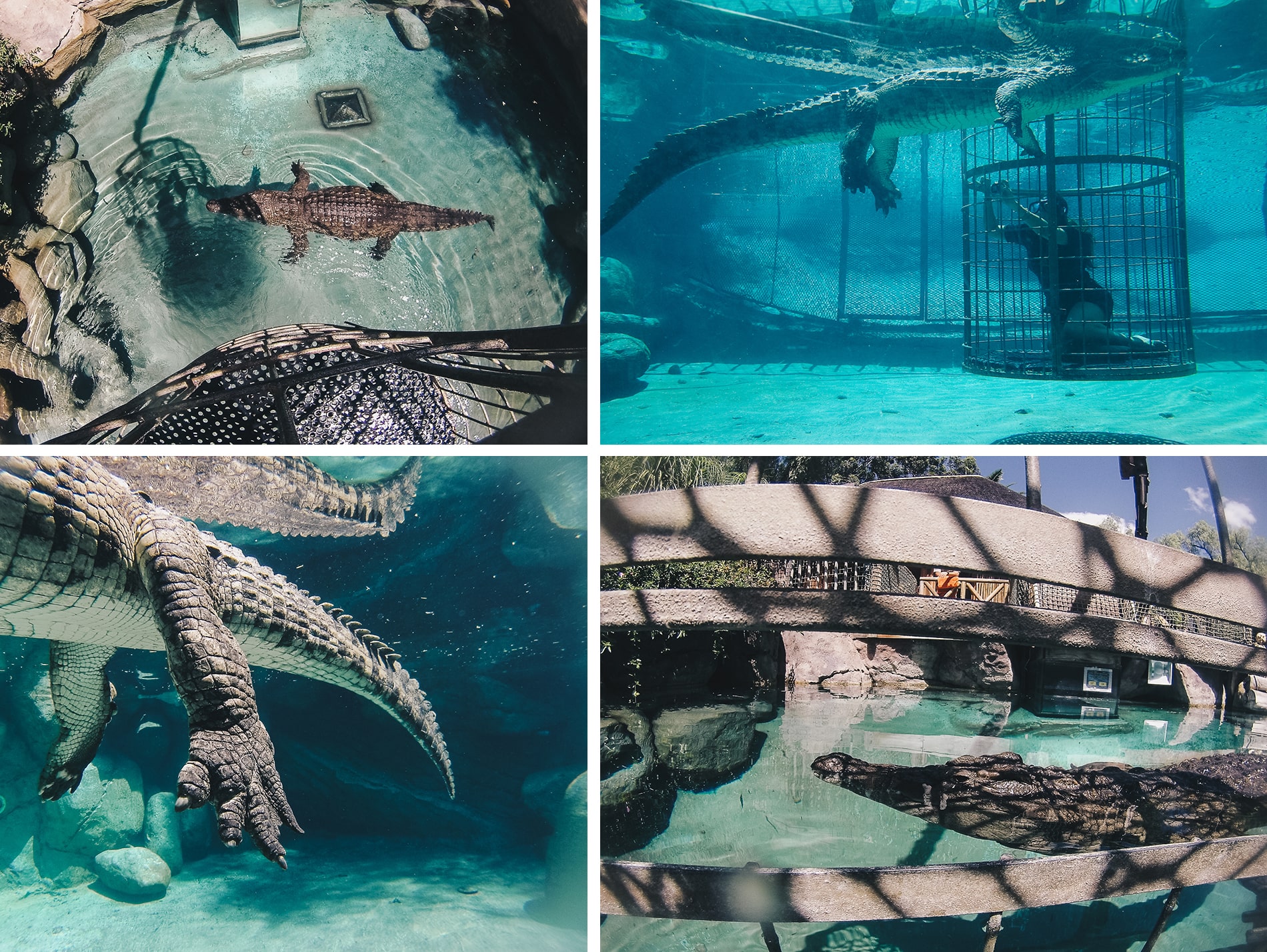
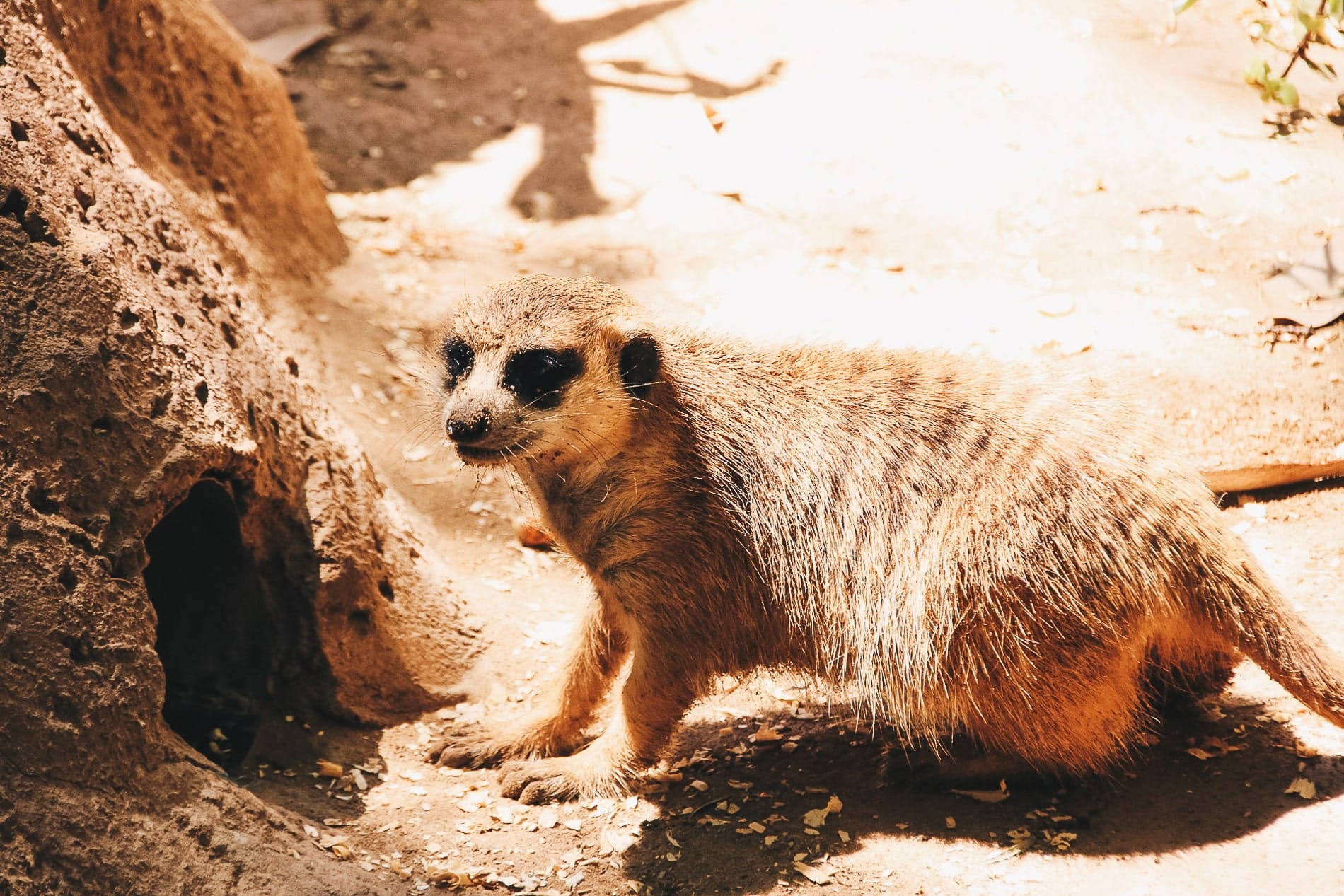
| SWARTBERG TOUR
The Swartberg, which in Afrikaans means “black mountain”, is a mountain range, a large part of which is a UNESCO World Heritage Site. It extends from west to east, at the southern limit of the Petit Karoo and to the north, the semi-desert zone of the Grand Karoo in the Western Cape province of South Africa. Several mountain passes cross the Swartberg, offering an impressive geological landscape with many twists and turns.
These mountains are home to the famous Cango Caves, one of South Africa’s best-known underground systems, whose entrance is on the southern flank near Swartberg Pass, north of Oudtshoorn.
- Explore the majestic Swartberg Pass on an unforgettable 3-hour guided tour. You’ll hike among 500 different species of flora and fauna. As an option, you can ride your mountain bike downhill to the restaurant, where a charming traditional lunch awaits you.
➡️ Check availability for this outing and make a reservation
- Half-day excursion to Swartberg Pass from Oudtshoorn
➡️ Check availability for this outing and make a reservation
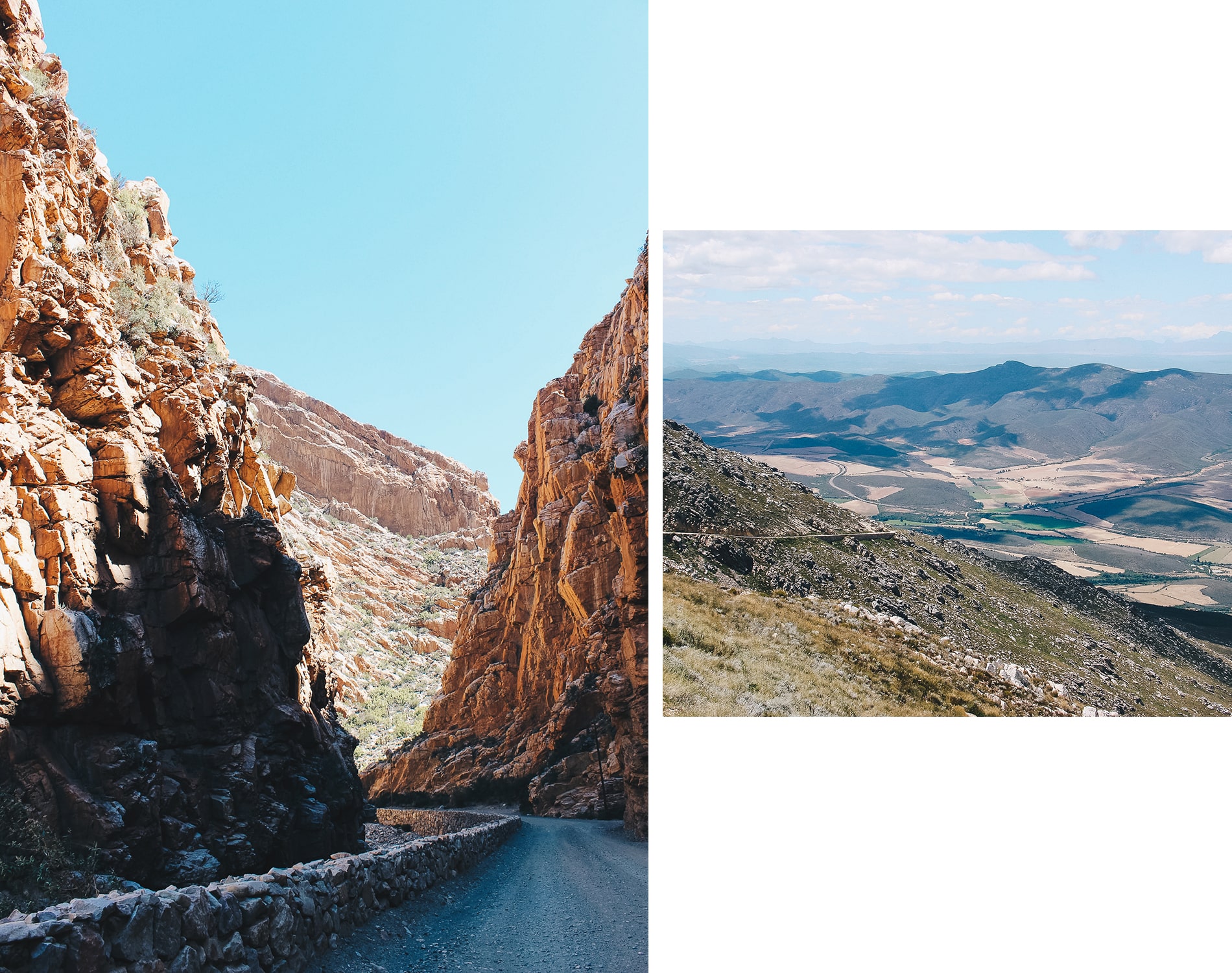
| BUFFALO ELEPHANTS
Welcome to the Buffelsdrift game lodge! This place is well known in South Africa for its magnificent setting! Located on a 3,000-hectare wildlife reserve, the establishment not only offers unusual accommodation such as tents, but also traditional, refined cuisine in a relatively tranquil setting. You also have the Buffelsdrift Log Cabin, a beautiful 3-bedroom vacation home, perfect for relaxing.
The restaurant overlooks a small lake where you can see hippos, Inawas, Springbok and Giraffes. The cuisine is gourmet and therefore a little more expensive, but that’s the price you pay for this setting!
After lunch, you can choose from a range of activities offered by the hotel, including jeep safaris in the reserve.
➡️ Check availability for this outing and make a reservation
To find your accommodation in Oudtshoorn, please check availability:
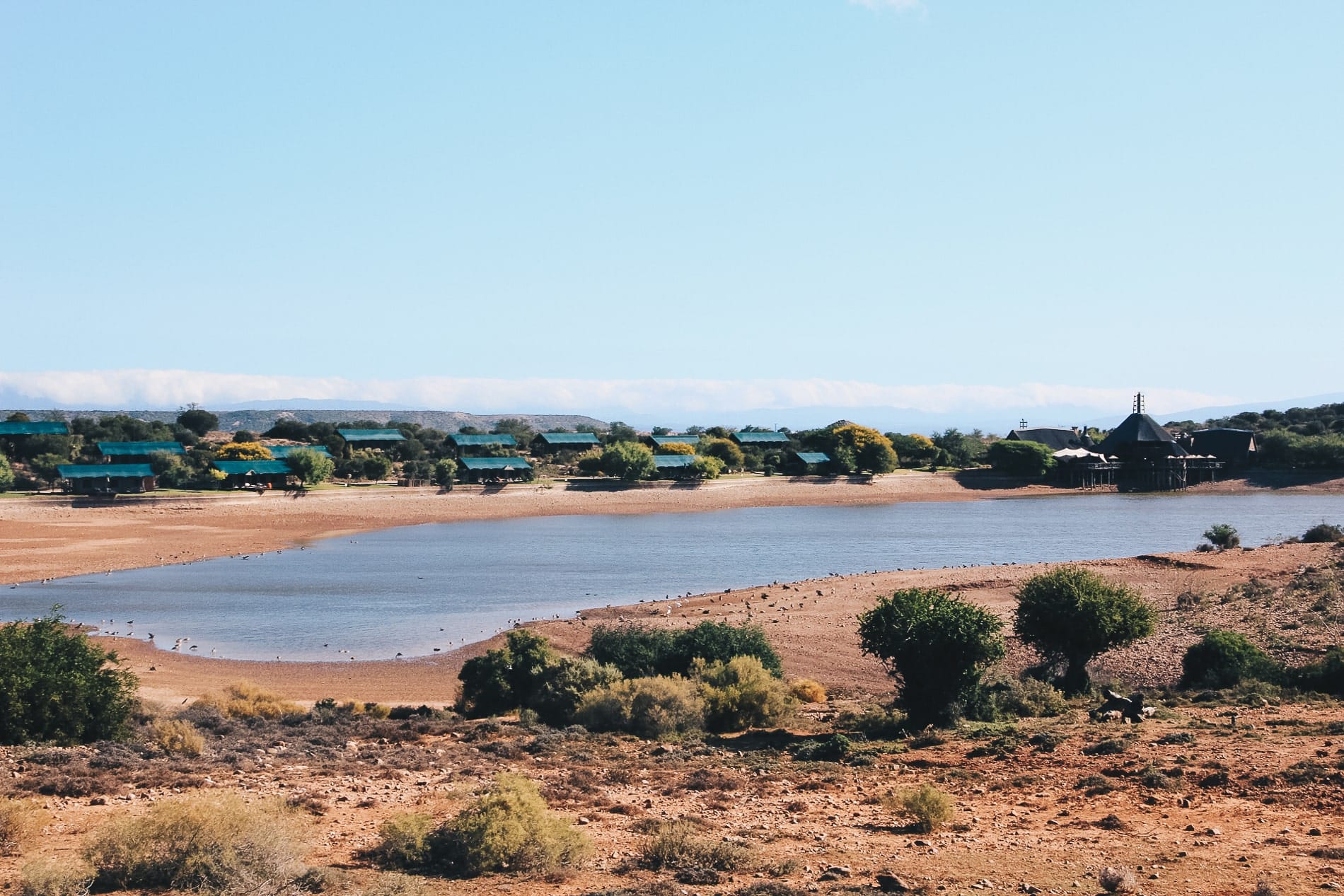
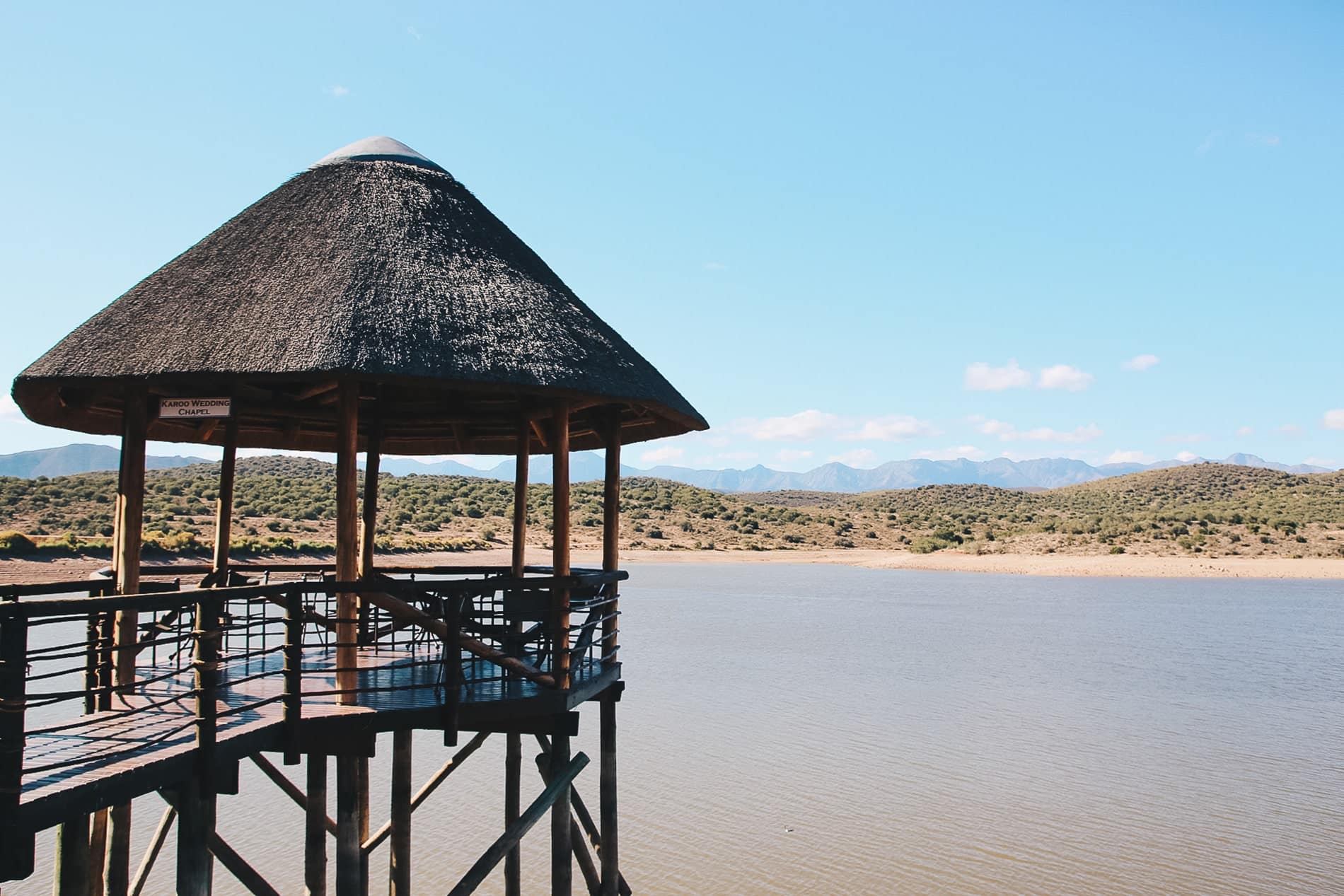
| WHERE TO SLEEP IN OUTSHOORN
Welcome to Lodge 96 in Oudtshoorn, run by Matt and Rosa. It’s halfway between a lodge and a hotel for backpackers. A warm welcome awaits you, and your hosts will be on hand to advise you on all the activities and best restaurants to try in the area. They can even get you discounts if you go through them! What’s more, if you arrive in sweltering heat, you’ll appreciate the coolness of the small pool. Lodge 96 comprises 1 dormitory with 8 beds, 1 family room with bathroom sleeping 5 to 7, and 4 double rooms, 2 of which have bathrooms.
To find your accommodation in Oudtshoorn, please check availability:
If you’re looking for a good place to dine in the evening, we’d definitely recommend The Black Swan, a friendly restaurant with impeccable service. The owner kindly invited us and we enjoyed ourselves in his establishment. It’s located in the city center and offers modern cuisine with the ostrich fillet which is simply a treat when you’re a red meat lover. I chose the spicy shrimps, and they were a great success! Here you’ll be able to taste fine local wines such as Syrah, Pinot Noir and Pinotache at very reasonable prices. An address we highly recommend. If, like us, you like good red wines, dip your lips in a glass of Karusa or De Krans.
Please note that as an accredited bespoke tour creator, I offer to accompany you in the creation of your tailor-made stay in South Africa and create a personalized itinerary tailored to your needs. Please send me an email at : contact@mademoiselle-voyage.fr
Before you leave, I also invite you to read our various articles to prepare your trip to South Africa:
